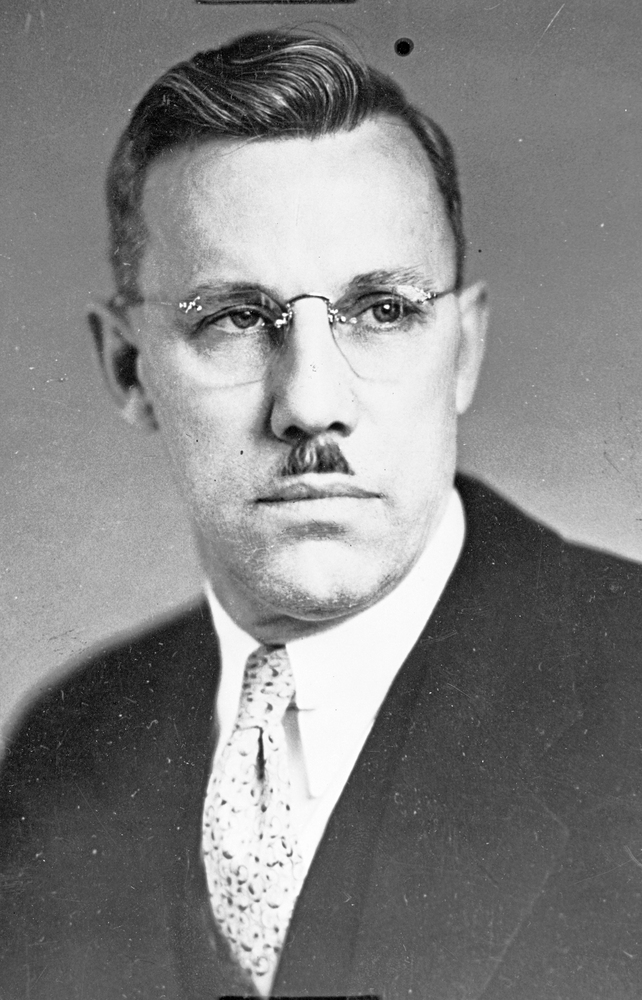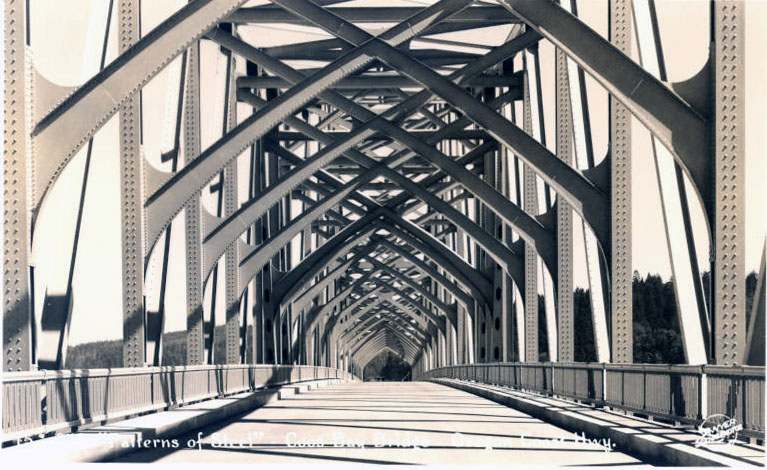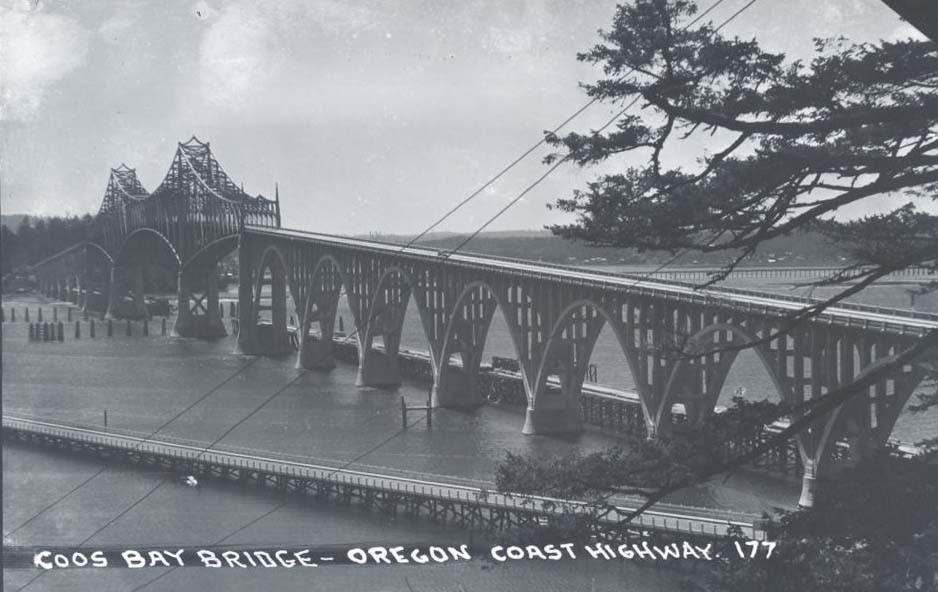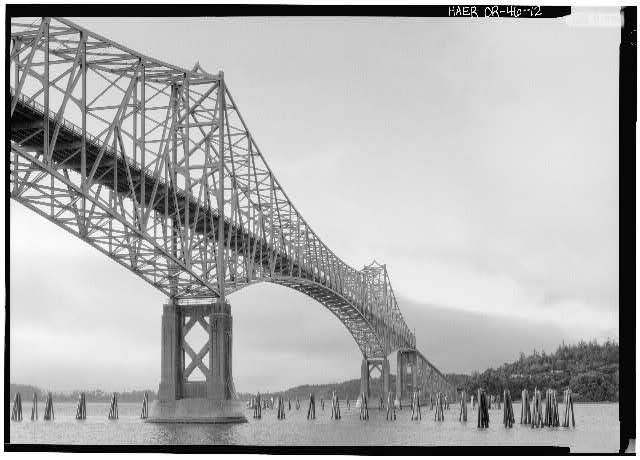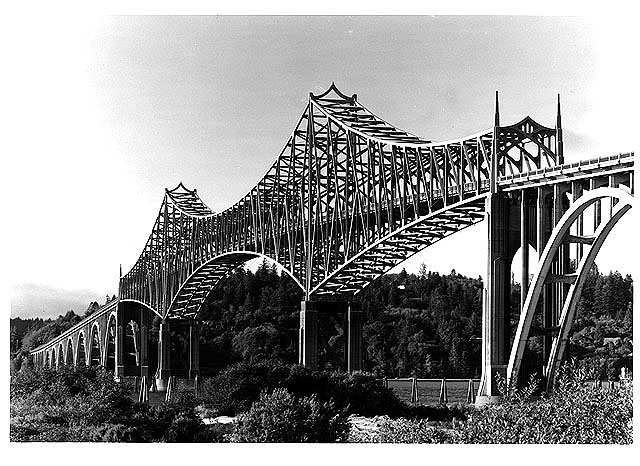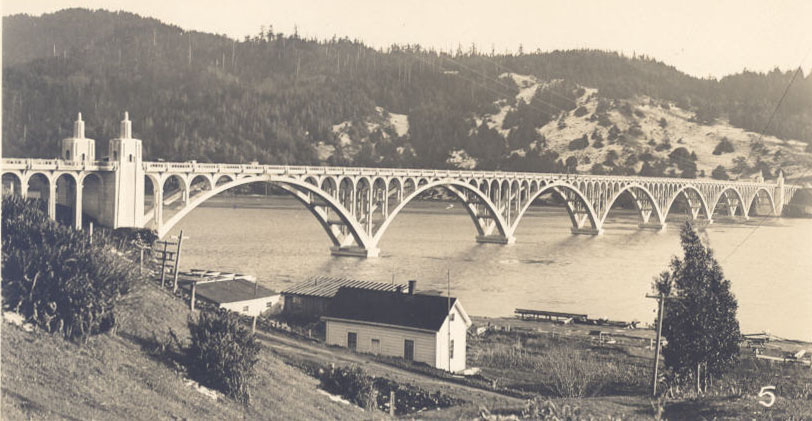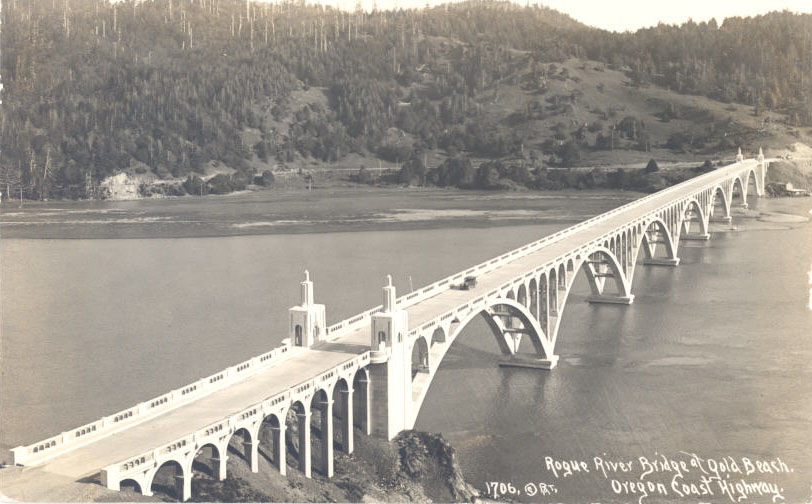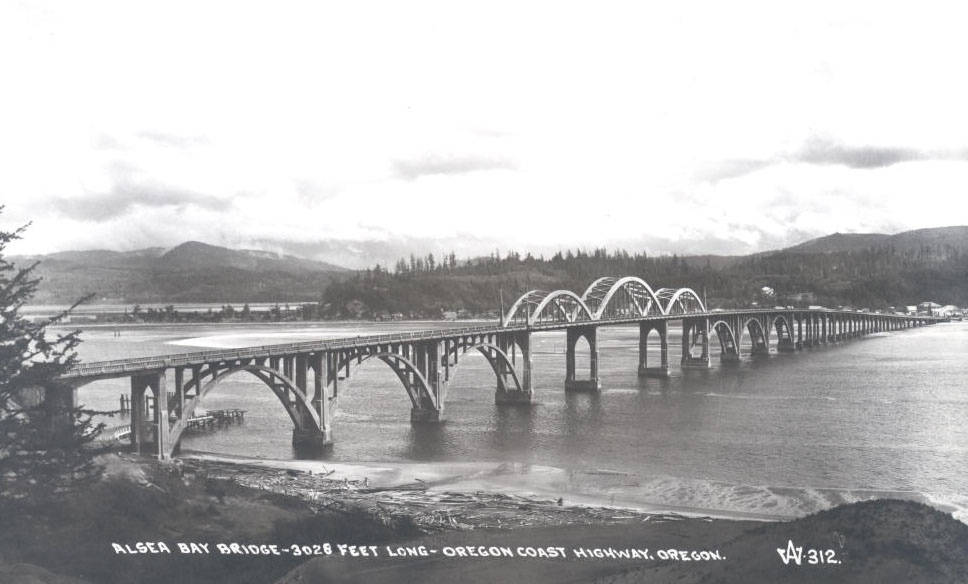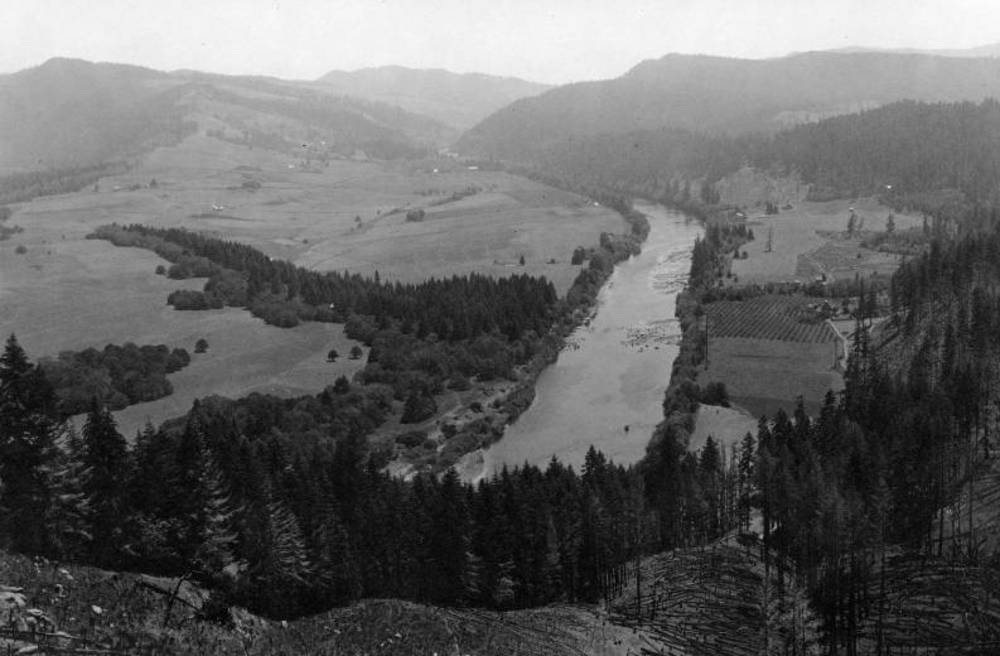Conde B. McCullough, born in Dakota Territory in 1887, was raised and educated in Iowa, earning undergraduate and graduate degrees in civil engineering from Iowa State College. McCullough moved to Oregon in 1916 to teach structural engineering at Oregon Agricultural College (now Oregon State University). In 1919, he went to Salem to take a job state bridge engineer. For eighteen years, McCullough headed the bridge design and construction program of the Oregon State Highway Department (OSHD).
During his years with the OSHD, McCullough became one of the leading bridge engineers in the United States. Several of McCullough's striking bridges span rivers, bays, and inlets along the Oregon Coast Highway (U.S. Highway 101). Most impressive is the mile-long bridge at Coos Bay, a graceful concrete and steel structure of rhythmic beauty. McCullough's work in Oregon—hundreds of structures, including over thirty arched spans—was part of the state's nationally recognized highway system at a time when the automobile first claimed its place in the life and character of America.
The pinnacle of McCullough's career in Oregon was the completion of five major bridges on the Oregon Coast Highway in 1936: the Yaquina Bay Bridge at Newport, the Alsea Bay Bridge at Waldport, the Siuslaw River Bridge at Florence, the Umpqua River Bridge at Reedsport, and the Coos Bay Bridge at North Bend. McCullough was an impassioned promoter of state-sponsored bridge building, which incorporated engineering efficiency with economic practicality and aesthetic appeal. Many of his bridges are rich in architectural detail, with the finest among them embellished with classical, Gothic, and Art Deco/Moderne elements.
In 1932, McCullough took on the added title of assistant state highway engineer. When design work was completed on the five major Oregon Coast Highway bridges in 1935, he headed to Central America, where he designed several structures for the Inter-American Highway. These included suspension bridges over the Río Chiriqui in Panama, the Río Choluteca in Honduras, and the Río Tamasalupa in Guatemala. When McCullough returned to Oregon in 1937, he left bridge designing for other administrative duties at the OSHD. McCullough died from a stroke in 1946, just weeks short of his fifty-ninth birthday.
In honor of its 125th anniversary in 1999, ENR (formerly the Engineering News-Record), published a list of the people who had made outstanding contributions to the construction industry since 1874. C. B. McCullough was one of the ten bridge engineers who made the list. "Their efforts," ENR believed, "helped shape this nation and the world . . . by developing new analytical tools, equipment, engineering or architectural design." They "dared to span great lengths with the most elegant, constructible and economical solutions possible."
In 2005, twelve of McCullough's bridges were listed in the National Register of Historic Places: the Willamette River (Oregon City) Bridge and eleven spans on the Oregon Coast Highway at the Wilson River, Depoe Bay, Rocky Creek, Yaquina Bay, Ten Mile Creek, Big Creek, Cape Creek, Siuslaw River, Umpqua River, Coos Bay, and Rogue River (Gold Beach).
-
![Conde B. McCullough in 1935.]()
Conde B. McCullough in 1935.
Conde B. McCullough in 1935. Oregon Historical Society Research Library CN 011683
-
![Coos Bay Bridge]()
Coos Bay Bridge.
Coos Bay Bridge Courtesy Oreg. Hist. Soc. Research Lib., Acc97204
-
![Coos Bay Bridge]()
Coos Bay Bridge.
Coos Bay Bridge Courtesy Oreg. Hist. Soc. Research Lib., 19181
-
![Conde B. McCullough Memorial Bridge]()
Conde B. McCullough Memorial Bridge.
Conde B. McCullough Memorial Bridge Courtesy Library of Congress, photo by Jet Lowe, 1990, HAER ORE,6-NOBE, 1-12
-
![Conde B. McCullough Memorial Bridge]()
Conde B. McCullough Memorial Bridge.
Conde B. McCullough Memorial Bridge Courtesy Library of Congress, photo by Jet Lowe, 1990, HAER ORE,6-NOBE, 1-10
-
![Rogue River Bridge]()
Rogue River Bridge.
Rogue River Bridge Courtesy Oreg. Hist. Soc. Research Lib., Acc no.9689
-
![Rogue River Bridge]()
Rogue River Bridge.
Rogue River Bridge Courtesy Oreg. Hist. Soc. Research Lib., bc005871
-
![Alsea Bay Bridge]()
Alsea Bay Bridge.
Alsea Bay Bridge Courtesy Oreg. Hist. Soc. Research Lib., 19310
Related Entries
-
![Coos Bay]()
Coos Bay
The Coos Bay estuary is a semi-enclosed, elongated series of sloughs an…
-
![Reedsport]()
Reedsport
In many ways, the story of Reedsport is a microcosm of the story of Ore…
-
![Rogue River Bridge]()
Rogue River Bridge
The Rogue River Bridge spans the mouth of the Rogue River between Gold …
-
![Umpqua River]()
Umpqua River
The Umpqua River, approximately 111 miles long, is a principal river of…
-
![US 101 (Oregon Coast Highway)]()
US 101 (Oregon Coast Highway)
Many places on the Oregon coast were virtually inaccessible in the earl…

